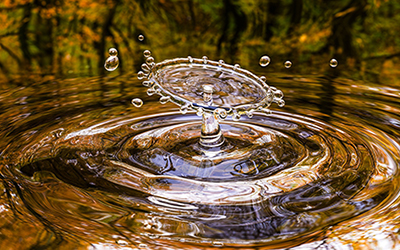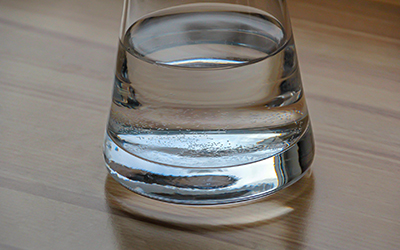 “Raw,” or “live” water has become trendy, especially in California and New England, and it’s dangerous.
“Raw,” or “live” water has become trendy, especially in California and New England, and it’s dangerous.
Raw water startups are popping up around the country, and people are sharing the locations of springs where raw water can be obtained in areas that don’t have commercial service.
What is raw water?
It is exactly what it purports itself to be: water that hasn’t been treated or filtered. Proponents claim that it is full of healthy minerals and good probiotics, but those of us in the industry know that untreated water also can be full of pathogens.
Why are people drinking it?
The raw water trend seems to have grown out of the raw food trend – the feeling that the less processing, the better. Some claim the minerals in raw water have health benefits, although there are no studies to prove this and most people should get all the minerals they need through a balanced diet. Others claim that raw water contains healthy bacteria that is beneficial for the digestive system, although there still isn’t any science to back this up. Still others claim that raw water gives them more “energy.”
 Some people are concerned about our aging infrastructure after the Flint, Mich., water crisis and the danger of lead, primarily from service lines, leaching into their drinking water. Others are concerned about the presence of microplastics and BPAs that may be found in bottled water and prefer the reusable glass containers some raw water retailers provide over putting more plastic into landfills. Of course, filling a glass up at your home tap is an environmentally conscious way to enjoy safe water.
Some people are concerned about our aging infrastructure after the Flint, Mich., water crisis and the danger of lead, primarily from service lines, leaching into their drinking water. Others are concerned about the presence of microplastics and BPAs that may be found in bottled water and prefer the reusable glass containers some raw water retailers provide over putting more plastic into landfills. Of course, filling a glass up at your home tap is an environmentally conscious way to enjoy safe water.
There also is concern about the trace amounts of medications and the presence of fluoride in some utility systems. Experts agree that these quantities, amounting to only a few parts per million, are so small they are not a danger to human health.
Is it dangerous?
Of course it is – it’s not a coincidence that the rate of waterborne disease dropped to nearly zero in the modern era after the wide adoption of public water infrastructure. We dethroned King Cholera at the beginning of the 20th century, and, in the 100 years and change since then, many have forgotten the deadliness of dysentery and other diseases. For example, in many developing countries, where potable water isn’t as readily available as it is in the U.S., waterborne diarrheal diseases contribute to a high infant mortality rate, and one million people became ill with cholera in Yemen in 2017 after a drought.
Drinking untreated water can expose you to Giardia lamblia, cryptosporidium and Vibrio cholera – all pathogens that could make you sick or potentially kill you. Those exposing themselves to illnesses like typhoid fever by drinking raw water also chance infecting others, who aren’t risking themselves, once the disease enters the contagion phase.
How is it legal?
The raw water “industry” is so new, there is no oversight, regulation or monitoring, despite selling untreated water for as much as $5 per gallon. In cases where people source their own raw water, there’s not much that can be done, unless it is prohibited on a local level.
Municipal water systems must be regularly tested for 90 different dangerous substances, and those tests are monitored by the Environmental Protection Agency and are available for residents to review. Even the bottled water industry is regulated for quality and safety.
There are no regulations requiring raw water suppliers to tell you where, how or when they obtained the water they are selling – in fact, one company sources it from the same spring that the Madras, Ore., water system uses and sells it, untreated, for hundreds of times the cost of the same water from a municipal tap.
Should people drink raw water?
No. There may be ground water contaminants such as arsenic or heavy metals, parasites, agricultural runoff, pathogens or animal byproducts in spring water that hasn’t been treated. Although some raw water suppliers claim to test their water regularly, optimally, raw water drawn from a spring and untreated should be tested daily to ensure that it is safe to drink.
Even those who prefer drinking raw water can’t disconnect from the water grid – unless they want to buy enough raw water to bathe, cook, wash and clean as well. Most of the country can’t afford to spend $5 for a gallon of water – only those with the financial wherewithal can afford to indulge in this trend.
Some of the concerns cited by those drinking raw water are legitimate, such as a fear of lead, but instead of leaving much of the country behind to deal with an aging system, we should reinvest in our public water systems to ensure that everyone has safe, drinkable water.
NLC Service Line Warranty Program partners with municipalities to educate homeowners and offer affordable protection against potentially costly service line repairs. The Program uses a network of local plumbers who have gone through background and drug screenings. The Program’s 500-seat call center is staffed 24/7/365 to answer claims calls and dispatch contractors to address homeowners’ emergencies.
The Program is provided at no cost to cities, and partner cities can receive royalties based on participation.
To find out how you can help your residents achieve peace of mind, contact us.
